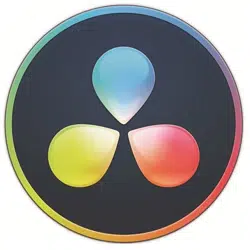Loading ...
Loading ...
Loading ...

300
The following lessons cover the basics you’ll need to learn to begin harnessing the power
of the Color page in your own projects – be they feature films, episodic television, web
series, short subjects, spots, promos, or corporate videos. No matter what you work on,
these formats employ the same fundamental grading techniques and the same basic tools;
so, if you’re new to the world of professional color grading, don’t worry. All rock star
colorists once had to learn these first steps for themselves, and you’ll use the fundamentals
you learn here for the rest of your career.
Gone are the days when high-quality color grading was unaffordable. Blackmagic Design
has put the powerful color tools of DaVinci Resolve within reach of any editor that has a
reasonably capable workstation or laptop. The polish you’ll need to achieve world-class
results is only a click away on the Color page.
However, before you start getting into the specifics of color, it’s important to step back
andconsider, what are these tools really used for?
Why Color Correct your Work?
It’s a tempting question, and one that countless producers and directors have asked.
“Theprogram looks fine the way it was shot, why spend the time to grade it?” It’s a good
question in an industry where time is money; if the program you’ve cut in the Edit page
looks fine, why bother grading it?
The answer is because your program won’t look as good as it will after being graded.
The process of adjusting the contrast and color of every clip in a program is variously
called color correction, color grading, or just grading. The difference in terminology is
largely superficial, but most experienced colorists prefer “grading” because “correction”
implies you only adjust things that are wrong, whereas “grading” implies that you’re holding
each clip in your program up to a higher artistic standard. A colorist doesn’t ask, “Does this
clip look good?” A colorist asks, “Could this clip look better?”
Setting the Tone of the Visuals
Much has been said about the emotional power of color to shape audience mood, and
nobody would argue that a scene lit by cool blue lighting is going to have a very different
vibe than one that’s lit by warm orange lighting. The greenish tinge of fluorescent fixtures,
and the salmon-hued wash of mercury vapor streetlights each paint the scenes of a show
with different atmospheric feelings that, when done right, add to the narrative and how
your audience perceives it.
Loading ...
Loading ...
Loading ...
